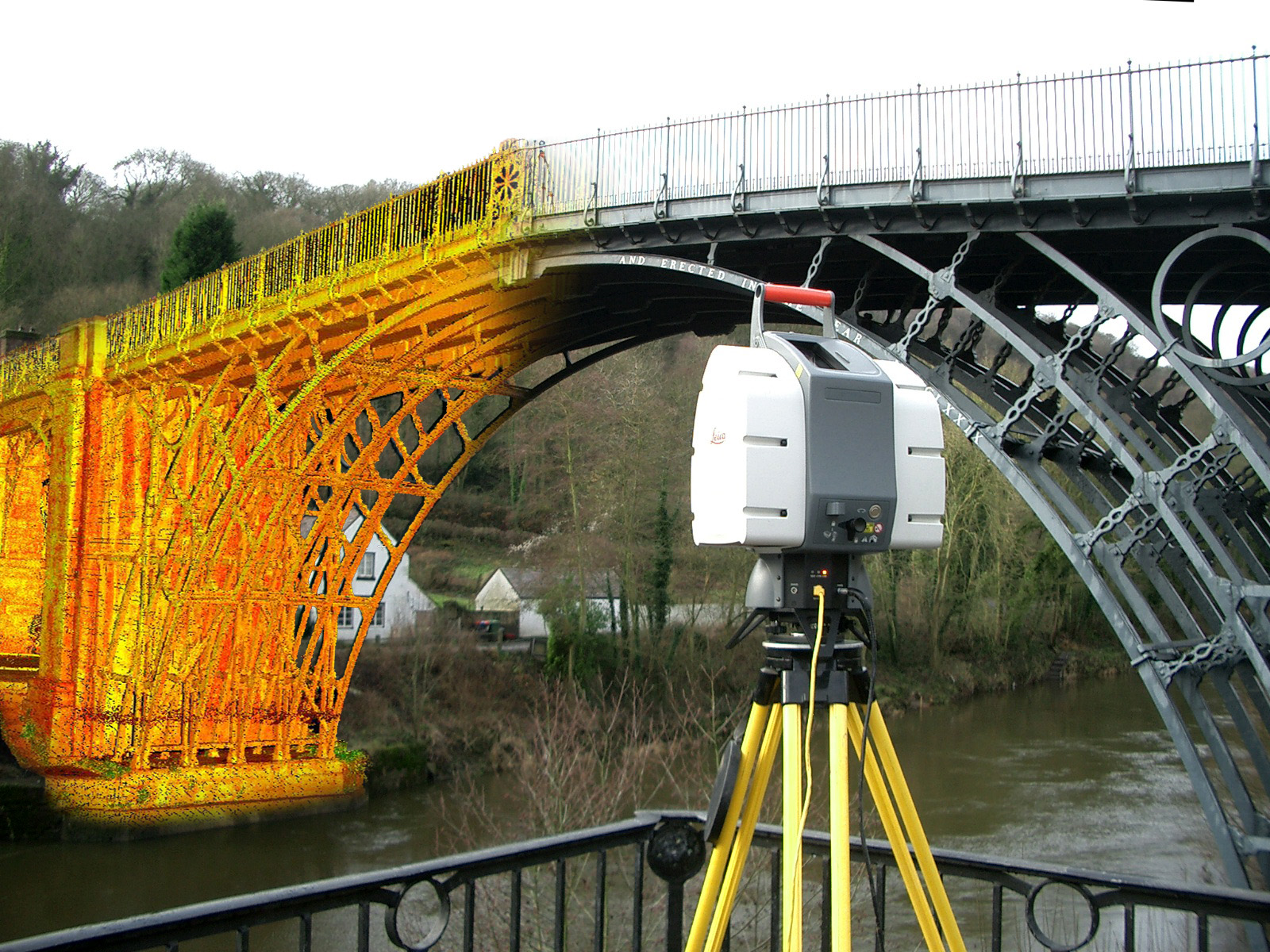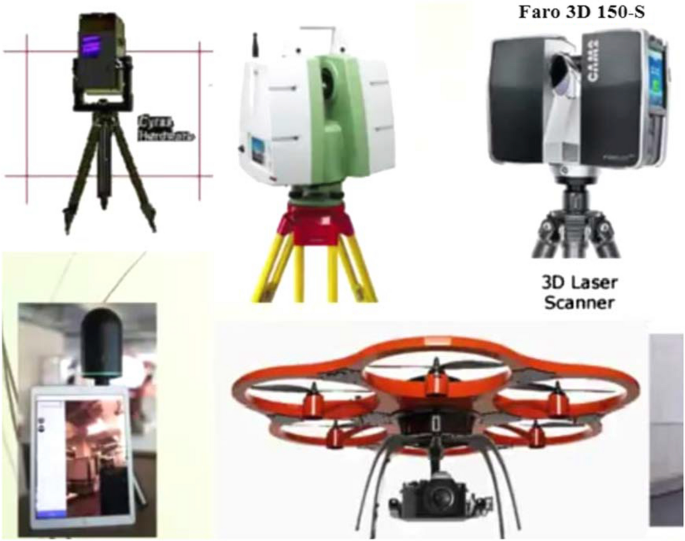The Future of Accuracy Measurement: Recognizing the Function of 3D Laser Scanning Technology
The landscape of precision dimension is progressing with the introduction of 3D laser scanning technology. This advancement promises boosted precision and efficiency throughout different fields. As markets begin to welcome these developments, the implications for task management and execution come to be increasingly considerable. The transformative impacts of this modern technology extend beyond simple numbers and dimensions, hinting at a more comprehensive shift in how experts approach their work. What might this suggest for the future?
What Is 3D Laser Scanning Technology?
3D laser scanning technology is an innovative approach used to capture accurate three-dimensional measurements of physical items and atmospheres. This modern technology makes use of laser beam of lights to gather data points, which are after that processed to develop thorough electronic depictions of the scanned topics. By releasing hundreds of laser pulses per secondly, 3D laser scanners can properly tape the form, size, and spatial connections of different surfaces.
The procedure typically entails placing the scanner at various perspective to catch substantial data. The resulting point cloud, a collection of millions of data factors, can be analyzed and exchanged 3D models. Applications of this technology span several fields, consisting of style, heritage, and design preservation, where it assists in documentation and evaluation. As a non-intrusive technique, 3D laser scanning lessens disruption to the setting, permitting detailed evaluations of both existing structures and all-natural landscapes, thus boosting understanding and facilitating educated decision-making.
Key Perks of 3D Laser Scanning in Various Industries
3D laser scanning modern technology provides significant benefits throughout numerous industries by giving improved precision and precision in measurements. This modern technology not only simplifies workflows yet also causes substantial time and expense financial savings. As organizations significantly adopt this cutting-edge method, the advantages come to be apparent in boosted task results and effectiveness.
Improved Accuracy and Precision
The integration of laser scanning technology has transformed the way markets approach measurement and information collection. This modern technology gives an unprecedented degree of precision, catching millions of information points in a solitary scan. Because of this, specialists throughout various fields, such as manufacturing, engineering, and architecture, can create highly outlined 3D designs that show real-world conditions. Enhanced precision reduces errors related to standard measurement techniques, guaranteeing that designs and buildings are based on exact information. Furthermore, the capability to capture intricate information permits for much better analysis and decision-making, eventually bring about boosted end results. By leveraging 3D laser scanning, markets can accomplish higher standards of top quality, making it an indispensable tool for accurate measurements.
Time and Cost Efficiency
Performance in time and price is a substantial benefit offered by laser scanning modern technology, changing task implementation across various industries. By swiftly capturing thorough 3D information, laser scanning lowers the moment invested in hands-on dimensions and lessens the threat of mistakes. This quick information procurement promotes quicker decision-making and project timelines, enabling teams to assign resources better. Additionally, the modern technology reduces the demand for rework, as accurate designs lead to much better preparation and execution. Industries such as building and construction, architecture, and producing advantage substantially, seeing lower prices connected to labor and products. On the whole, 3D laser scanning not only improves functional performance but likewise adds to significant cost savings, making it a vital tool in today's competitive landscape.
Applications of 3D Laser Scanning in Style and Construction
As building and building and construction projects grow progressively intricate, the fostering of laser scanning modern technology has become a transformative option. This modern technology supplies accurate measurements and detailed 3D representations of existing structures, promoting even more exact preparation and layout procedures. Engineers make use of 3D laser scanning to produce digital models that capture elaborate details, making sure that restorations and new constructions line up perfectly with existing problems.

The Duty of 3D Laser Scanning in Manufacturing Processes
3D laser scanning plays an important duty in producing processes by improving quality assurance via exact measurements and information collection. This technology permits producers to recognize inconsistencies early, reducing mistakes and waste. Additionally, it enhances manufacturing process by facilitating much better communication and control amongst teams.
Improved Quality Assurance
Quality control in making processes has been changed by the combination of laser scanning modern technology. This innovative technique permits precise measurements and thorough inspections of components, guaranteeing that they fulfill stringent quality requirements. 3D laser scanning records detailed geometries and tolerances, enabling producers to identify deviations from design specifications quickly. This innovation considerably lowers human mistake connected with conventional measurement techniques, supplying reliable and consistent information. By facilitating real-time quality assurance, it enables proactive adjustments in the production procedure, inevitably bring about boosted item dependability and client fulfillment. As markets progressively adopt 3D laser scanning, the potential for better top quality control ends up being obvious, marking a transformative change in making methods.
Streamlined Manufacturing Process
Efficient manufacturing operations are progressively benefiting from the integration of laser scanning modern technology in producing procedures. This technology permits for quick, accurate measurements of assemblies and parts, substantially minimizing the time needed for setup and changes. By catching precise geometry, makers can rapidly recognize inconsistencies in between style specs and real items, enabling instant corrective activities. On top of that, 3D laser blog scanning assists in the seamless transfer of data in between design and manufacturing groups, enhancing partnership and reducing errors. The modern technology also sustains electronic double creation, permitting real-time surveillance and optimization of manufacturing processes. Consequently, companies can achieve greater performance, reduced waste, and enhanced total productivity, eventually driving affordable advantage in the marketplace.
Maintaining Heritage: How 3D Laser Scanning Aids Cultural Conservation
As social heritage websites encounter the threat of degeneration and destruction, innovative innovations such as laser scanning become important devices for preservation initiatives. 3D laser scanning captures elaborate details of historic frameworks and artifacts with amazing precision, producing electronic versions that offer numerous objectives in conservation. These versions allow for accurate documents of current problems, allowing specialists to check adjustments with time and analyze deterioration risks.
In addition, laser scanning facilitates digital reconstruction, helping conservators create strategies for repair services or recreating lost aspects without intrusive methods. The technology additionally assists in informing the public, offering immersive experiences via digital excursions that highlight the importance of these sites. By incorporating 3D laser scanning into cultural preservation methods, stakeholders can guarantee that heritage is maintained for future generations while improving understanding and gratitude of historical contexts.
The Future Expectation: Innovations and Fads in 3D Laser Scanning Innovation
Though 3D laser scanning technology has actually already transformed different industries, its future promises also greater innovations that will boost precision, rate, and availability. Arising trends indicate a rise in integration with expert system and equipment knowing, causing smarter information handling and analysis capacities. This harmony will enable quicker decision-making and even more specific outcomes in fields such as design, heritage, and building and construction preservation.
In addition, advancements in hardware are anticipated to generate lighter, extra mobile scanning tools, equalizing gain access to for smaller firms and individual professionals - 3D Scanning. As software remains to progress, easy to use applications will simplify intricate process, making 3D scanning much more available to non-experts
The rise of cloud-based solutions will certainly assist in real-time collaboration and information sharing amongst stakeholders, paving the method for structured job management. Jointly, these patterns signify a future where 3D laser scanning modern technology becomes a vital tool in an also broader range of applications.
Frequently Asked Inquiries
Just How Much Does 3D Laser Scanning Modern Technology Expense?

What Are the Skills Required to Run 3D Laser Scanners?
Operating 3D laser scanners requires technological proficiency, focus to detail, spatial awareness, expertise of software for information processing, and an understanding blog here of evaluating principles. Furthermore, strong problem-solving abilities and logical skills are vital for efficient operation.
Can 3D Laser Scanning Integrate With Various Other Technologies?
Yes, 3D laser scanning can incorporate perfectly with other innovations, such as Geographic Details Systems (GIS), Structure Information Modeling (BIM), and increased fact, enhancing information accuracy and assisting in better analysis throughout numerous sectors and applications. - 3D Scanning
What Is the Normal Scanning Series Of These Gadgets?
The regular scanning variety of 3D laser scanning gadgets differs widely, normally in between 50 meters to over 1,000 meters, depending on the model and application, affecting their viability for various precision measurement tasks and atmospheres.
The length of time Does a 3D Laser Scanning Task Take?
A 3D laser scanning job commonly takes anywhere from a couple of hours to a number of days, depending upon aspects such as project size, complexity, and required detail. Each project's timeline can vary considerably based on these elements.
The landscape of precision dimension is evolving with the advent of 3D laser scanning technology. 3D laser scanning technology is a sophisticated method made use of to record specific three-dimensional dimensions of physical items and atmospheres. 3D laser scanning innovation provides significant benefits throughout different markets by offering enhanced precision and precision in dimensions. 3D laser scanning innovation has already changed numerous markets, its future guarantees even better innovations that will certainly improve speed, accessibility, and accuracy. 3D laser scanning innovation commonly sets you back in between $10,000 and $100,000, depending on the devices's attributes wikipedia reference and abilities.